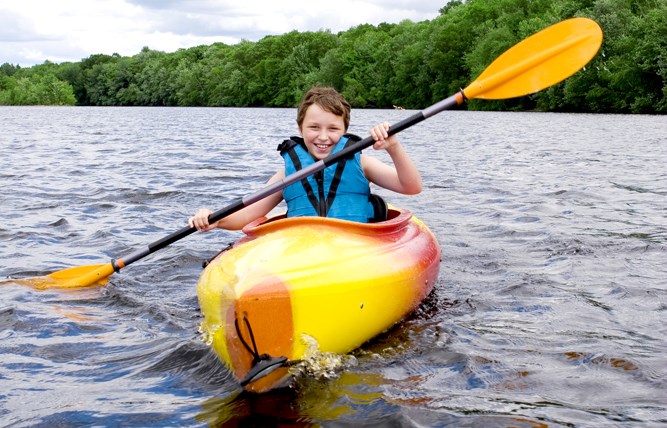It’s summer and the weather is spectacular.
We want our kids to get active, go out and play, and enjoy this time. Instead, there they are on their screens with their thumbs and maybe their fingers getting all the exercise.
We already know that physical exercise leads to better heart health, reduces the chances of childhood obesity and decreases the risk of developing diabetes.
The Report Card on Physical Activity for Children and Youth released by the non-profit organization ParticipAction indicates that only 35 per cent of five to 17 year olds and 62 per cent of children ages three and four are getting the recommended physical activity.
Along with what we know about the benefits to health outcomes, a growing body of research is showing that there are also significant mental benefits to exercise. We have been focused on obesity and physical health benefits and that’s a positive approach, but this new research shows us an increase in brain health. Physical activity improves brain function, cognition and mental health.
We are seeing an increase in anxiety and depression among our youth. I imagine there are a myriad of reasons, and recognition of the problem is certainly one of them. But lack of activity and the amount of time spent on screens has to factor into the equation.
Children who are active are more creative, better problem-solvers, and less likely to suffer from mental health problems.
“From increased cognitive skills to improved mental health, physical activity has profound impacts on kids’ brain health,” said Mark Tremblay, chief scientific officer of ParticipAction and director of the Children’s Hospital of Eastern Ontario Research Institute’s Healthy Active Living and Obesity Research Group. “So, for their brains’ sake, it’s time to get kids sitting less and moving more.”
So, how do we get them up and moving? We need to let them go outside and play. Once kids are school-aged it’s time to let them go out and play with their buddies.
Start with the closest play areas which may be neighbourhood backyards or the park.
If they don’t know how to get themselves from home to a play area it’s time to teach them. I also strongly recommend that you involve the parents in the neighbourhood. Make a plan. Teach them how to get to the park in a safe manner. Co-ordinate with the other families in your community so the kids can walk together and play together.
There are also a range of programs and sports for kids and these are a good idea but make sure they are also getting lots of unstructured free-play time.
Schedule screen time. Set up rules and guidelines for screen time. One family I spoke with have their child’s tablet set so that after a predetermined length of time the game shuts down. He then knows he’s finished until tomorrow. And then it’s time to run and play.
Besides having the kids join up with other kids to play they need to see us being active and will want to join in with us.
“We need to be active role models and set kids up to succeed,” said Elio Antunes, president and CEO of ParticipAction. “I understand that modern life can get in the way of making the time to get active, but I encourage all families to try. And, get outdoors more because it is a powerful antidote for kids facing stress.”
I hear a lot of parents and grandparents reminiscing about outdoor play in the summer when they were kids. It was great. Let’s give our kids the same memories and at the same time benefit their physical and mental health.
Kathy Lynn is a parenting expert who is a professional speaker and author of Vive la Différence, Who’s In Charge Anyway? and But Nobody Told Me I’d Ever Have to Leave Home. parentingtoday.ca.



